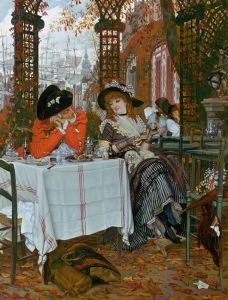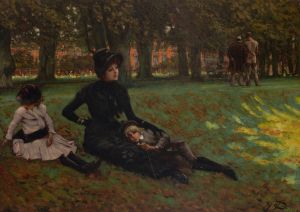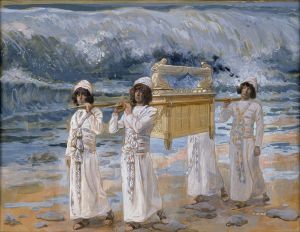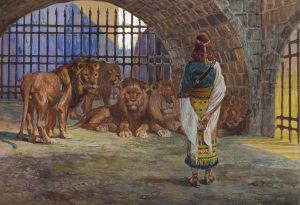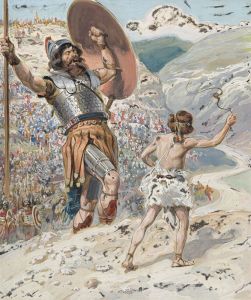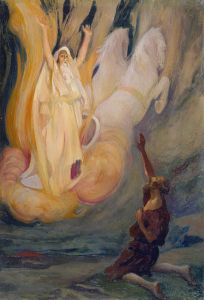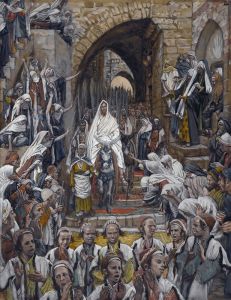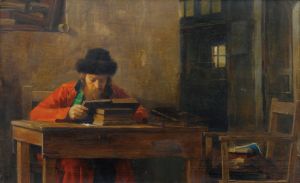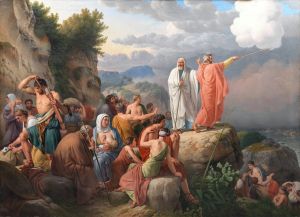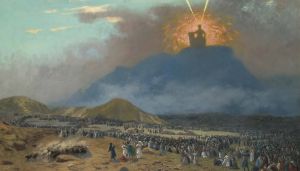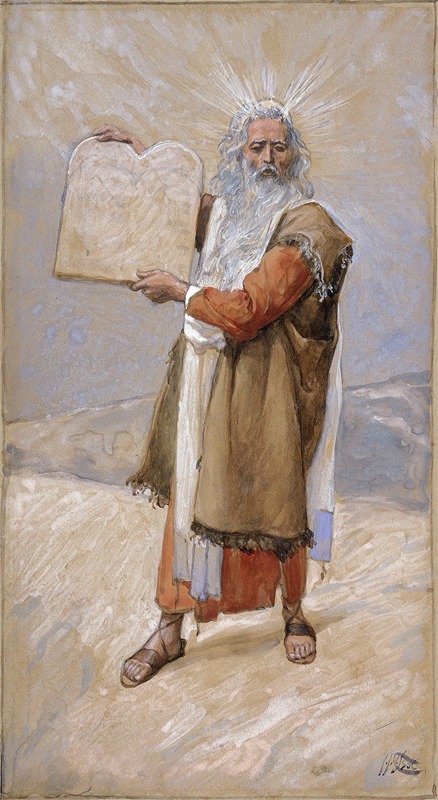
Moses and the Ten Commandments
A hand-painted replica of James Tissot’s masterpiece Moses and the Ten Commandments, meticulously crafted by professional artists to capture the true essence of the original. Each piece is created with museum-quality canvas and rare mineral pigments, carefully painted by experienced artists with delicate brushstrokes and rich, layered colors to perfectly recreate the texture of the original artwork. Unlike machine-printed reproductions, this hand-painted version brings the painting to life, infused with the artist’s emotions and skill in every stroke. Whether for personal collection or home decoration, it instantly elevates the artistic atmosphere of any space.
James Tissot, a French painter and illustrator, is renowned for his detailed and evocative biblical scenes. One of his notable works is "Moses and the Ten Commandments," which is part of his extensive series titled "The Life of Moses." This series is a component of Tissot's larger project, "The Bible," which he worked on from the late 19th century until his death in 1902. Tissot's biblical illustrations are celebrated for their historical accuracy and attention to detail, reflecting his deep interest in the cultural and historical contexts of the biblical narratives.
"Moses and the Ten Commandments" depicts the moment when Moses receives the tablets of the Ten Commandments from God on Mount Sinai, a pivotal event in the biblical Book of Exodus. Tissot's portrayal is characterized by his meticulous research into the clothing, architecture, and landscapes of the ancient Near East, which he sought to represent as authentically as possible. His commitment to accuracy was informed by his travels to the Middle East, where he studied the environment and artifacts to better capture the essence of the biblical settings.
In the painting, Moses is often shown as a commanding figure, holding the stone tablets inscribed with the commandments. The scene is imbued with a sense of divine presence, often depicted through the use of light and shadow, which Tissot employed to convey the spiritual significance of the moment. The dramatic landscape of Mount Sinai serves as a backdrop, emphasizing the isolation and solemnity of the event.
Tissot's work on "The Life of Moses" and his broader biblical series was groundbreaking for its time. He approached these religious subjects with a documentary-like precision, which was unusual for the period. His illustrations were intended not just as works of art but as educational tools, offering viewers a window into the historical and cultural realities of biblical times. This approach was part of a broader 19th-century trend towards realism and historical accuracy in art.
The reception of Tissot's biblical works was mixed during his lifetime. While some praised his dedication to detail and his innovative approach to religious art, others criticized him for what they perceived as an overly literal interpretation of sacred texts. Despite this, his works have endured and continue to be appreciated for their artistic and historical value.
Today, Tissot's "Moses and the Ten Commandments" and his other biblical illustrations are housed in various collections, including the Brooklyn Museum, which holds a significant number of his works. These paintings remain a testament to Tissot's unique vision and his contribution to the genre of religious art. His ability to blend artistic skill with scholarly research has left a lasting impact on how biblical stories are visualized and understood.





